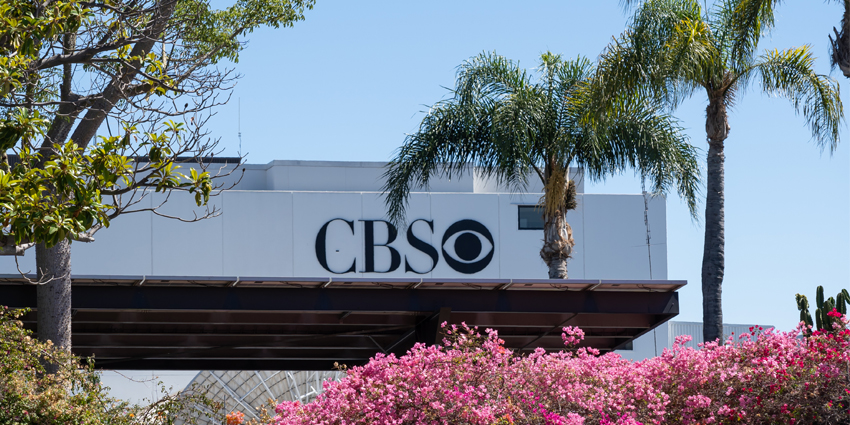Today, CBS Chicago will debut an AR/VR-powered virtual production studio during an afternoon [CT] weather newscast. Chief Meteorologist Albert Ramon is taking the innovation reigns, leveraging the XR studio during a weather forecast and using AR/VR to portray crucial information as real-time 3D visualisations.
Ramon will report on the weather via a 1,100+ square-foot, 16-foot-tall virtual production stage, highlighting everyday weather expectations, storm paths, micro-climates, and other critical information to help viewers plan their day.
As first reported by TVNewsCheck, CBS is the first station in the Chicago region to leverage XR technology to present weather forecasts. Moreover, the CBS Chicago initiative appears to be part of a larger drive to push AR/VR broadcasts at nationwide CBS news studios, which so far include regions such as Philadelphia, Denver, New York, and the Bay Area.
Jennifer Lyons, President-GM of CBS Chicago, said:
We are beyond excited to be the only station in Chicago delivering weather in an all-new AR/VR format. This technology is a game changer, offering our viewers a deeper, more engaging way to understand the weather. Whether it’s preparing for a winter storm or simply planning their day, our audience will benefit from an interactive and visually immersive experience that only AR/VR can provide.
Lyons also noted that the XR initiative is “about elevating the storytelling and giving our viewers what they need – clear, concise information.”
CBS to Spearhead Nationwide XR Campaign
According to the report, Jennifer Mitchell, the President of CBS Stations, is spearheading the nationwide AR/VR broadcast initiative. The initiative started at CBS’ San Francisco station, where the firm’s production team designed the code and framework behind the now nationwide XR virtual production offering.
Mitchell added:
Our focus has always been on investing in journalism that truly serves our viewers. Launching this AR/VR technology across CBS Stations is just one example of how we are pioneering new ways to deliver the news that matters most to our audiences. We constantly ask ourselves how we can enhance our storytelling and make it more dynamic, informative and relevant to people’s lives.
Reports also suggest that following CBS-nationwide rollouts, the broadcasting firm will use XR in other ways to better inform its viewers.
Mitchell explained:
This AR/VR-driven weather format is just the beginning, and it reflects the mindset we bring to all of our journalism: we are committed to being ahead of the curve and delivering what our viewers want in the most engaging ways possible.
Is XR the Future of Broadcasting?
The news comes as many foremost technology leaders experiment with XR as a broadcasting and mass communication tool.
XR is not limited to headsets, which is a common misconception. From 3D monitors to broadcasting solutions —like the CBS intuitive—real-time 3D visualizations can fit a variety of use cases. Namely, in virtual production situations, cameras and broadcasting technology can present 3D information to a viewer, which is reactive to a camera’s movements and a presenter’s actions.
CBS is not the only firm experimenting with headset-less XR technologies for communication and collaboration. Earlier this year, Sony Electronics introduced new 3D visualization tools that allow users to view and interact with XR content without needing smart glasses, made possible through the ELF-SR2 (27-inch) and ELF-SR1 (15.6-inch) Spatial Reality Displays, which are designed to facilitate professional RT3D workflows and considerations.
Thanks to this new display technology, users can now avoid using intrusive VR headsets, thus promoting more extended periods of XR content usage without the perceived hardware limitations; moreover, the display technology can contribute to virtual broadcasts.
Sony also uses virtual production (VP) solutions to modernize traditional filmmaking techniques. These solutions include high-quality LED walls (volumes), MR Studios, volumetric capture, and AR-enhanced broadcasting. VP solutions enhance techniques like backdrops and shooting within moving vehicles, providing a safe, repeatable set with immersive visualizations.
Another firm leveraging XR broadcasting solutions is AWS. During the 2024 Mobile World Congress conference in Barcelona, Spain, AWS showcased a new product as part of its move towards establishing a robust spatial computing ecosystem. The company collaborated with Proto Holograms to present a system powered by Amazon Bedrock, which features a large-scale kiosk with holographic AI avatars.
At the event, AWS and Proto Holograms streamed a live broadcast from AWS VP Matt Wood, allowing him to engage with the audience in real time and answer questions. This demonstration emphasised AWS’s “next-generation partner ecosystems,” which combine emerging technology platforms with content providers to drive the next wave of AI. AWS’s Bedrock service empowers Proto Hologram to select base avatar models, customize private data sets, and integrate additional AWS services.







